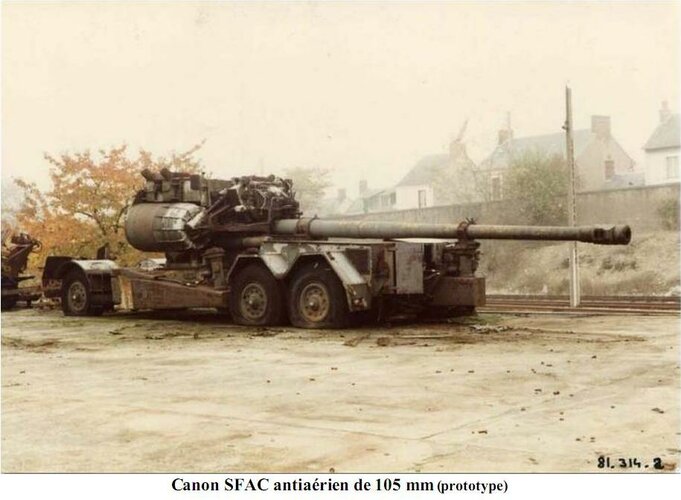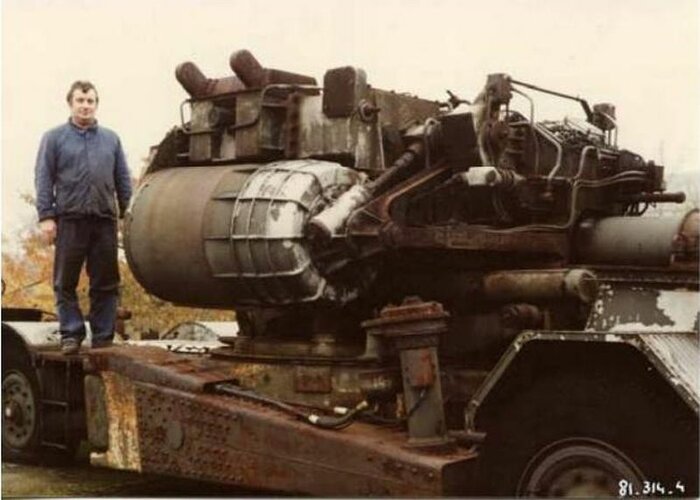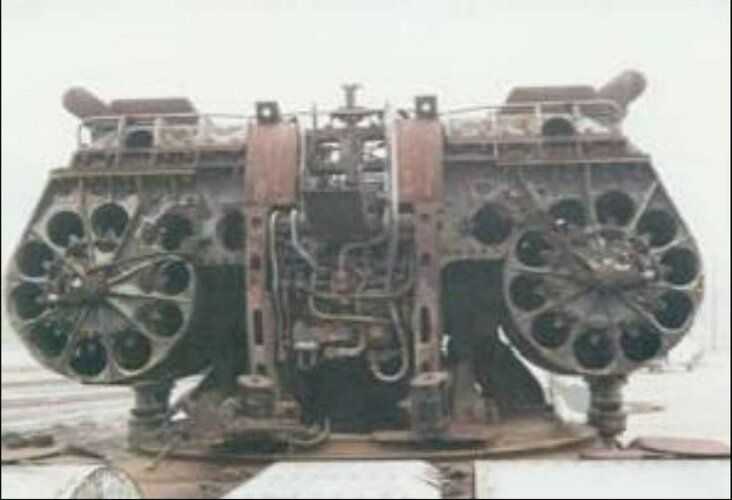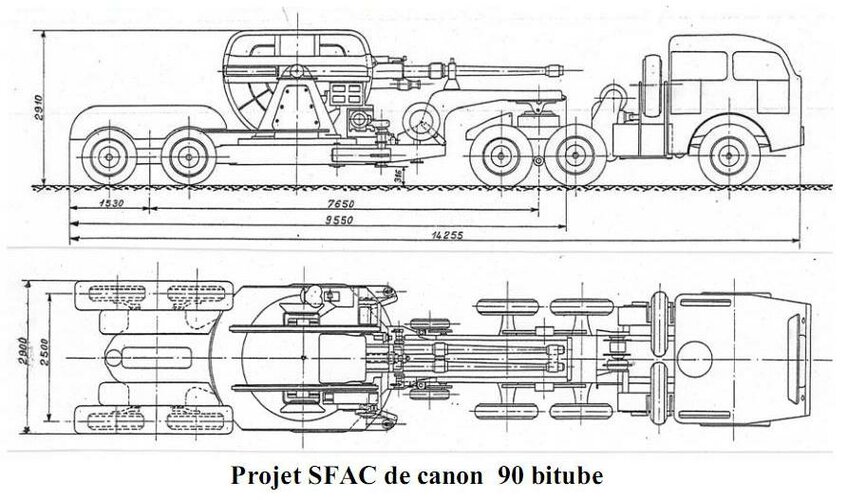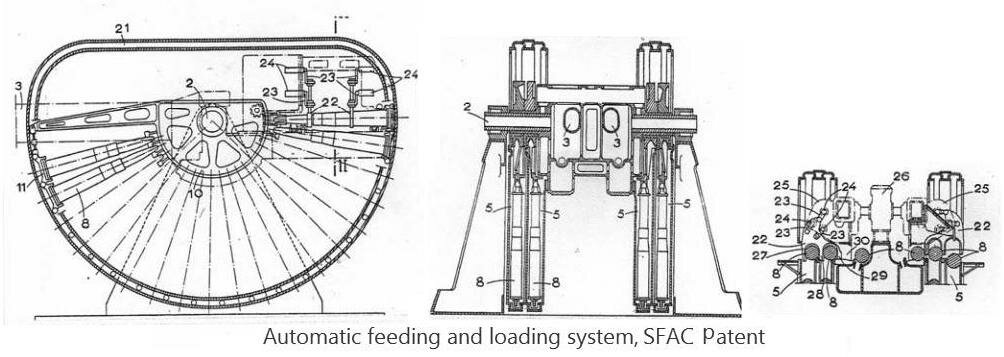klem
I really should change my personal text
- Joined
- 7 March 2015
- Messages
- 616
- Reaction score
- 1,239
In France since 1945, the DEFA (Direction des Etudes et Fabrication d'Armement), began the study of a new anti-aircraft system equipped with automatic guns of large caliber new models: 105 mm and 90 mm bitubes. From 1948, the DEFA entrusted the mission of the 105 mm automatic gun to the SFAC (Société des Forges et Ateliers du Creusot, SCHNEIDER group). The prototypes were completed in 1953, however the study was never pursued. From 1951, the twin-tube 90 mm gun. whose prototypes, firing and remote control tests were completed in 1955. the 105 material consisted in increasing the range of action compared to the American gun. Long before the Germans envisaged to improve their basic material which was the 88 FLAK and they had put in service towards the end of the war the 105 FLAK. The 105 material of the SFAC fired at approximately the same initial speed as the German material, that is 800 m/s, a projectile of 18 kg instead of 15 kg for the German material. Although it had the same caliber and the same initial speed, the French project was much more powerful. It was organized to be able to be fed automatically with two enormous barrels containing each one ten 105 mm cartridges in order to obtain a planned rate of fire of 30 shots per minute whereas the German gun fired only 8 to 10. As for the carriage, it was in triflèche, to allow a setting in battery and a very fast exit of battery, not exceeding 20 minutes. The weight was very high, from 13 to 15 tons. The studies led in 1953 to the realization of a complete gun, with a horizontal range of 17 km and a practical ceiling of 9.500 meters, firing tests took place, but the experimentation was not pushed to its term. This material was indeed judged complicated and not very mobile, likely to be used only in semi-fixed defense of the sensitive points of the territory. then it was necessary a lighter, more mobile and less complex material. This was the 90 mm bitube gun. The latter, its evolution dates from 1948 and was to be completed in 1951. Indeed the DEFA had asked the (SFAC), to establish a preliminary project of "material of 90 mm DCA bitube on self-propelled carriage with track", and whose mass should not exceed 15 tons. The SFAC then established a project using a chassis of the AMX 13 tank, but did not manage to satisfy all the specifications. Finally, it was decided to give up the tracked self-propelled chassis on the one hand, and on the other hand to be satisfied with an initial speed of 820 m/s by using the American 90 mm ammunition. The only operational improvement sought was therefore an increase in the rate of fire, which was to reach 110 rounds per minute for both tubes, with a magazine containing 58 rounds. The decision to launch the study was made in 1951: "90 mm equipment firing a projectile of approximately 23,230 kg at an initial speed of 1,000 m/s, with a high rate of fire and mounted on a self-propelled carriage that could pass over a military bridge". This material was led to the state of prototype and the tests of shooting and remote control were carried out in a form proposed by the manufacturer with a system of feeding to carry the capacity in store to 80 ammunition in total. Finally one gave up at the beginning of the Sixties with the one and the other of these materials, too heavy and too complex. Some people qualified them as "engineers' delirium". (Mémoire de Jean-Pierre PETIT 'Un siècle d'artillerie sol-air'-Tome 2) https://artillerie.asso.fr/docs/DSA100/Tome%202%20-%20PDF%2030092015.pdf
Attachments
Last edited:

